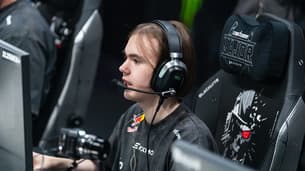
'Play-to-Earn' or 'Play-to-Win'? The Real Hurdles for Ethereum Games in Esports

Esports has become nothing short of a cultural juggernaut. With prize pools soaring past $40 million for tournaments like The International and viewership numbers that rival the Super Bowl, competitive gaming has cemented itself as a real entertainment powerhouse. Established titles like League of Legends and Counter-Strike have built ecosystems where billions circulate, attracting both hardcore fans and casual viewers who tune in for the spectacle.
You know what other nascent industry attracted similar attention? Crypto and blockchain, and at some point, their so-called blockchain games aimed for nothing short of the same level of recognition. Their best-known value proposition is different: Instead of grinding for cosmetics you'll never truly own, blockchain games offer genuine asset ownership through NFTs and tokenized economies. The pitch is compelling: what if your hours of practice and skill development could translate into real-world value beyond prize money?
But why stop there? Fans of crypto games hoped that one day those could stand next to other legacy competitive titles. The real question is if this is at all possible without compromising what makes esports compelling in the first place. Can blockchain technology enhance competitive integrity, for one, or will trying to make it into a competition introduce new forms of unfairness and all sorts of other mess?
The Pillars of Fair Competition for an Esport-Ready Game
Not just any game makes a great and engaging spectacle. What separates a legitimate esport from a casual game? To no one’s surprise, the same core qualities that make competition meaningful in any traditional sport, be it chess or soccer.
Competitive Depth: A true esport needs a high skill ceiling where players can constantly improve and discover new strategies. Chess perfectly illustrates this: simple rules hiding incredible strategic depth that separates grandmasters from beginners. Without this complexity, competitive scenes eventually stagnate.
Spectator Appeal: Great esports are thrilling to watch, and I don’t mean the visuals. Clear objectives, dynamic gameplay, and high-stakes moments keep audiences engaged. Counter-Strike succeeds here with its fast-paced rounds and visible tension that even non-players are able to appreciate.
Stable Game Balance: The in-game economy and mechanics must remain consistent over time. No exploits, no sudden meta shifts that invalidate months of practice, and certainly no pay-to-win elements that let money trump skill. Put a pin in this point for later.
Fair Competition: Every player competes on equal terms: same access to game mechanics, same conditions and opportunities to succeed. CS:GO's rigorous anti-cheat systems and balanced weapon design exemplify why competitive integrity can never be compromised.
Any game aspiring to esports legitimacy must nail all of those four pillars, which is where blockchain gaming incidentally faces its biggest challenges. In other words, now’s the time to unpin the ‘pay-to-win’ elephant in the room.
Double-Edged Sword of In-Game Monetization
The Promise of True Asset Ownership
Blockchain games attempt to offer something traditional gaming hardly could: genuine, uncensorable ownership that cannot be revoked. Any cosmetic you bought on Steam, no matter how cheap or costly, is trapped in Valve's ecosystem until it is around (which might not be forever). But NFTs and tokenized assets change the game entirely: players can trade, sell, or transfer their items across platforms and even between compatible games (should anyone bother actually implementing this).
The goal is a player-driven economy where time and skill translate into real value. Instead of grinding for cosmetics that disappear once end-of-service comes, players build actual digital portfolios. Imagine earning or even building rare items through competitive play, then selling them to fund your next tournament entry or equipment upgrade. Your gaming dedication becomes an investment, not just entertainment.
For even more finance-brained gamers, decentralized finance integration means players can stake assets, earn yields, or participate in governance decisions. Deeper economic participation could revolutionize how we think about competitive gaming as well, turning esports careers into multifaceted financial ventures. At least, on paper.
The Trap of 'Play-to-Win'
In practice, this is the fatal flaw of all Ethereum games: when ownership meets gameplay advantages, competitive integrity dies. The current play-to-earn model is pay-to-win repackaged.
Consider: grinding for months to master a character, or simply buying a rare NFT with 20% bonus damage. Who wins? The wallet, not the skill or even time sunk. When exclusive weapons, enhanced abilities, or superior stats can be purchased rather than earned through practice, no more level playing field that makes competition meaningful.
And serious esports demands meritocracy. Games like CS:GO succeed because everyone starts with identical tools: victory depends on aim, strategy, and teamwork, not credit card limits. The moment external advantages enter the equation, competitive legitimacy evaporates and serious players abandon ship, if they even touched the game in the first place.
The Current Landscape: Case Studies and Key Lessons
It took a few years for this simple fact to sink in with the crypto gaming crowd. They know it not just from heeding the words of sceptics but from a common experience of the community.
What Went Right (and Wrong) with Axie Infinity
Axie Infinity was blockchain gaming's breakout star and ended up its biggest cautionary tale. At its peak, the game boasted millions of players earning real money by breeding, battling, and trading cute digital creatures. The dual-token economy (AXS and SLP) created genuine earning opportunities, with some Filipino players making more than local minimum wage by playing a rather casual game. However, the moment a competitive tournament scene which strived for esports potential started to raise its head, it all turned into a beautiful trainwreck.
The hyper-inflationary tokenomics collapsed spectacularly. SLP tokens flooded the market faster than demand could absorb them, crashing from meaningful earnings to pennies. As rewards evaporated, so did the player base. The tournament scene appropriately died along with it.
The lesson here is simple: a successful economy isn't the same as a competitive one. Axie proved that millions of users and substantial earnings don't guarantee esports viability. Without sustainable economic design that maintains long-term value, even the most popular blockchain games can implode, taking not just competitive aspirations with them but any chance of success or survival.
The Rise of 'Fun-First' Design
Learning from Axie's mistakes, newer blockchain games like Illuvium and Off The Grid are flipping the script. Believe it or not, instead of leading with tokenomics, they're building genuinely great games first—rich lore, deep mechanics, professional graphics—then adding blockchain elements as enhancements, not centerpieces.
This breakthrough approach now targets regular gamers who care more about gameplay than earning potential. Gods Unchained, one of the more successful blockchain games, feels like Hearthstone with ownership benefits. Illuvium promises AAA production values that could attract mainstream audiences.
The strategy makes sense: sustainable competitive scenes require players who love the game itself, not just its economic potential. By prioritizing player engagement over token speculation, these titles are laying the groundwork for legitimate esports integration where blockchain enhances competition rather than kills it at its root.
Addressing the Technical and Design Hurdles
Scalability
Unsurprisingly, there are a few more things stopping blockchain games from being esports-ready. Picture Ethereum as a highway during rush hour—when everyone tries to use it simultaneously, traffic grinds to a halt. High gas fees and sluggish transaction speeds make current Ethereum unsuitable for real-time competitive gaming. Try explaining to a pro player why their crucial ability didn't register because the network was congested.
Layer 2 solutions are the current industry's answer, like express lanes built over the existing highway. Platforms like Immutable X and Ronin process transactions off the main chain while maintaining Ethereum's security. The result? Near-instant transactions with minimal fees, just good enough to make the lag unnoticeable.
Games already using Layer 2 solutions demonstrate smooth, responsive gameplay that rivals traditional titles. Axie Infinity these days is actually a Ronin game (but the problem with it was not the latency or lag). As these technologies mature, at least the scalability excuse for avoiding competitive gaming goes away.
Verifiable Fairness
So far, I’ve only talked about things that stop blockchain games from being viable in esports. But blockchain gaming has a genuine competitive advantage: verifiable fairness. Traditional esports occasionally face "rigged game" accusations: suspicious loot drops, convenient matchmaking, or developer favoritism. Players have to trust that everything's legitimate.
Blockchain can eliminate this uncertainty through verifiable randomness functions (VRFs), enabled by the powerhouse-grade encryption at the core of every blockchain. Every random event—critical hits, card draws, loot spawns—gets recorded transparently on-chain. Anyone can audit the results and verify they weren't manipulated.
This creates unprecedented competitive integrity. Tournaments using on-chain data ensure no single party can influence outcomes. Traditional esports rely on trust and reputation, potential blockchain esports would operate on mathematical proof. For competitive communities that value fairness above all else, this technological guarantee could become the ultimate selling point.
A Vision for Future Viability
With this all in mind, this is not to say that competitive blockchain gaming is a pipe dream. The next generation of successful blockchain esports won't be built by and for crypto enthusiasts, and the community seems to have already accepted that.
Fun-first design, as unsurprising as it is, is a requisite. Players need compelling gameplay before they care about asset ownership. Ideal way to proceed is to build something people want to play regardless of tokenomics, then add blockchain benefits as the cherry on top.
Layer 2 adoption lowers the technical barriers. Fast, cheap transactions enable the responsive gameplay that competitive scenes demand. Games stuck on mainnet Ethereum are as good as dead in the water before they start.
Transparent mechanics through verifiable randomness create unprecedented fairness. When every random event is provably legitimate, competitive integrity reaches levels traditional esports can't match.
Skill-based economies separate winners from also-rans. Asset ownership should enhance the experience, not determine outcomes. The moment money trumps talent, it’s an investment vehicle, not an esport.
The projects that crack this balance can result in successful games and establish an entirely new category of competition where true ownership enhances rather than compromises competitive integrity.
Conclusion
The hurdles facing Ethereum games in esports are real—scalability issues, the pay-to-win fundamental contradiction, and unproven competitive models create legitimate skepticism. But these challenges aren't permanent barriers.
The shift from "play-to-earn" to "play-and-own" can be the sign of industry's maturation. When developers stop chasing token hype and start building compelling competitive experiences, blockchain's unique advantages: verifiable fairness, genuine ownership, transparent mechanics become powerful differentiators rather than gimmicks.
This article was prepared by Catherine Welsch. As the lead writer in the ChangeHero team, she educates the user base about all things blockchain and crypto.

Kateryna Prykhodko er en kreativ forfatter og pålitelig bidragsyter hos EGamersWorld, kjent for sitt engasjerende innhold og sin sans for detaljer. Hun kombinerer historiefortelling med tydelig og gjennomtenkt kommunikasjon, og spiller en viktig rolle både i plattformens redaksjonelle arbeid og i interaksjonen bak kulissene.
 Beste CS2-lag i 2025CS2 i 2025 leverte elitekonkurranse med to major-turneringer, sjokkerende resultater og fremragende lag. Oppdag de 10 beste lagene og deres innvirkning på sesongen.
Beste CS2-lag i 2025CS2 i 2025 leverte elitekonkurranse med to major-turneringer, sjokkerende resultater og fremragende lag. Oppdag de 10 beste lagene og deres innvirkning på sesongen. LoL Media Teams: Den definerende e-sporttrenden i 2026Utforsk de beste LoL-medieteamene i 2026. Fra Los Ratones i LEC Versus til French Flair, se hvordan disse organisasjonene bruker streamerinnflytelse for å dominere seertall og den profesjonelle scenen.
LoL Media Teams: Den definerende e-sporttrenden i 2026Utforsk de beste LoL-medieteamene i 2026. Fra Los Ratones i LEC Versus til French Flair, se hvordan disse organisasjonene bruker streamerinnflytelse for å dominere seertall og den profesjonelle scenen. Ny Witcher 3 DLC: En potensiell historiebro til The Witcher 4Vil Ciri komme tilbake i en ny Witcher 3 DLC? Les om den ryktede utvidelsen fra mai 2026, dens innvirkning på seriens slutter og dens rolle som en narrativ lenke til den kommende Witcher 4-sagaen.
Ny Witcher 3 DLC: En potensiell historiebro til The Witcher 4Vil Ciri komme tilbake i en ny Witcher 3 DLC? Les om den ryktede utvidelsen fra mai 2026, dens innvirkning på seriens slutter og dens rolle som en narrativ lenke til den kommende Witcher 4-sagaen. Hvordan Donk kastet 2025-sesongenEtter tidlig dominans og store seire, mistet donks 2025-sesong med Team Spirit sakte momentum, og et flott år ble til et som føltes uferdig.
Hvordan Donk kastet 2025-sesongenEtter tidlig dominans og store seire, mistet donks 2025-sesong med Team Spirit sakte momentum, og et flott år ble til et som føltes uferdig.

